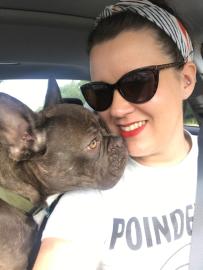- About Us
- Advertise / Support
- Editorial Board
- Contact Us
- CancerNetwork.com
- TargetedOnc.com
- OncLive.com
- OncNursingNews.com
- Terms & Conditions
- Privacy
- Do Not Sell My Information
© 2025 MJH Life Sciences™ and CURE - Oncology & Cancer News for Patients & Caregivers. All rights reserved.
Opdivo Before Surgery May Improve 5-Year Survival in NSCLC

Darlene Dobkowski, Managing Editor for CURE® magazine, has been with the team since October 2020 and has covered health care in other specialties before joining MJH Life Sciences. She graduated from Emerson College with a Master’s degree in print and multimedia journalism. In her free time, she enjoys buying stuff she doesn’t need from flea markets, taking her dog everywhere and scoffing at decaf.
Immunotherapy treatment with Opdivo before surgery improved recurrence-free survival and overall survival at five years in patients with non-small cell lung cancer.
Patients with resectable non-small cell lung cancer (NSCLC) treated with Opdivo (nivolumab) before undergoing surgery had favorable outcomes after five years, according to a recent study.
Findings from the study, which were published in the journal Clinical Cancer Research, also demonstrated that patients with major pathological responses to treatment (as determined by tissue samples) and PD-L1 positivity (indicating eligibility for immunotherapy) have improved recurrence-free survival at five years.
“The results from the five-year follow-up analysis indicate that neoadjuvant (Opdivo) was safe in long-term follow-up and led to encouraging survival in this patient cohort,” Dr. Patrick Forde, associate professor of oncology and director of the thoracic oncology clinical research program at the Sidney Kimmel Comprehensive Cancer Center at Johns Hopkins University in Baltimore, said in a press release. “The long-term safety and efficacy data from this study provide further support for the use of (Opdivo) in the neoadjuvant setting.”
Researchers analyzed data from 21 patients with stage 1 through 3A NSCLC who were treated with two doses of Opdivo for four weeks before undergoing surgery.
Several factors were evaluated during five years of follow-up including overall survival (the time after treatment starts when a patient with cancer is alive), recurrence-free survival (the time when a patient is alive without the cancer coming back) and potential associations with PD-L1 and major pathological responses. Patients were followed up for a median of 63 months.
“To our knowledge, this is the longest follow-up to date for a PD-1/PD-L1 inhibitor in the neoadjuvant setting for any solid tumor,” Forde said in the release.
After follow-up, the five-year overall survival rate was 80%, and the rate of recurrence-free survival at five years was 60%, among patients who underwent surgical resection. Patients with major pathological responses to treatment and PD-L1 positivity before treatment had favorable rates of recurrence-free survival.
Researchers found that the majority of patients with major pathological responses — 89%, or eight out of nine patients — were alive and free from disease at five-year follow-up.
No deaths related to cancer occurred in patients with major pathological responses to Opdivo. In the 11 patients without major pathological responses, six of them experienced tumor relapse and three patients died.
“An interesting finding from the analysis was the difference in outcomes between patients with and without a major pathological response,” Dr. Samuel Rosner, medical oncology fellow at the Sidney Kimmel Comprehensive Cancer Center, in the release. “Although the sample size was small, the results illustrate the potential power of pathological response as a predictive biomarker.”
For more news on cancer updates, research and education, don’t forget to subscribe to CURE®’s newsletters here.
Related Content:



